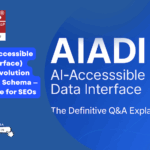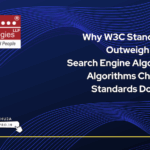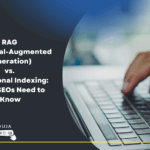Search engines have undergone significant transformations over the past two decades, prioritizing user experience (UX) as a critical ranking factor. As search engines evolve, their algorithms increasingly emphasize delivering relevant, high-quality, and user-friendly results. Google and Bing, the two most prominent search engines, have integrated various UX signals into their ranking systems, albeit through slightly different methodologies. This article explores the importance of UX in search rankings, how it has evolved since 2000, and what it means for SEO professionals and webmasters today.
Define User Experience:
User Experience (UX) for a website refers to how a visitor interacts with and perceives the website in terms of usability, design, accessibility, performance, and overall satisfaction. A well-designed UX ensures that users can easily navigate the site, find information quickly, and complete desired actions without frustration.
Key Components of Website UX:
- Usability – The site should be easy to navigate, with intuitive menus and clear content hierarchy.
- Design & Aesthetics – A visually appealing, clean, and consistent design enhances user engagement.
- Performance & Speed – Fast loading times are critical to prevent user drop-offs.
- Mobile Responsiveness – The site should work seamlessly across different devices and screen sizes.
- Accessibility – The website should be usable by people with disabilities (e.g., proper color contrast, alt text for images, keyboard navigation).
- Content Clarity – Well-structured, readable, and relevant content helps users find what they need easily.
- Interactivity & Feedback – Interactive elements (buttons, forms, links) should respond clearly to user actions.
- Trust & Security – Secure browsing (SSL, data privacy) and clear policies build user confidence.
A great UX ensures that visitors have a smooth, enjoyable, and effective interaction with the website, leading to higher engagement, conversions, and customer satisfaction.
The Evolution of UX as a Ranking Factor
Early 2000s: Keyword-Centric Algorithms
In the early 2000s, search engines relied heavily on simple keyword-matching algorithms. Websites that stuffed content with exact-match keywords and amassed large volumes of backlinks—regardless of quality—could rank higher in search results.
Google’s PageRank algorithm, introduced in the late 1990s and refined in the early 2000s, was a major innovation in ranking web pages based on link authority. However, this era saw rampant abuse of link schemes, doorway pages, and low-quality content that prioritized search engines over human users. Bing (previously MSN Search) had a similar keyword-heavy approach with less sophisticated ranking mechanisms.
2010-2015: The Rise of UX Signals
As search engines matured, they began focusing on content quality and user engagement. Google’s Panda (2011) and Penguin (2012) updates marked a shift towards rewarding high-quality, user-friendly content. These updates penalized thin content, keyword stuffing, and manipulative link-building strategies, indirectly pushing websites to improve their UX.
During this period, dwell time, bounce rate, and page speed gained prominence as indirect ranking signals. In 2015, Google introduced RankBrain, an AI-driven component of its algorithm designed to interpret user intent and adjust rankings based on behavioral data. This was a significant move towards UX-driven ranking factors.
Bing also improved its approach by incorporating user engagement metrics, such as click-through rate (CTR), time spent on site, and page interaction levels, into its ranking algorithm. Unlike Google, Bing publicly acknowledged the importance of social signals, suggesting that likes, shares, and comments on platforms like Facebook and Twitter could influence rankings.
2020-Present: Core Web Vitals and AI-driven UX Metrics
Google’s Core Web Vitals (2020) marked a major milestone in UX becoming a direct ranking factor. This set of metrics measures:
- Largest Contentful Paint (LCP): How quickly the main content loads.
- First Input Delay (FID): The responsiveness of interactive elements.
- Cumulative Layout Shift (CLS): The visual stability of a page.
With the Page Experience Update (2021), Google officially integrated these metrics into its ranking algorithm. Mobile-friendliness, HTTPS security, and intrusive interstitials also became crucial factors.
Bing, while not explicitly incorporating Core Web Vitals, introduced similar criteria within its Bing Page Quality guidelines, emphasizing mobile optimization, page speed, and user satisfaction.
Google’s Approach to UX as a Ranking Factor
Google’s UX-centric ranking approach includes multiple signals:
- Mobile-First Indexing: Since 2018, Google has prioritized mobile-friendly websites for ranking.
- Page Speed and Core Web Vitals: Websites that load slowly or have unstable layouts may face ranking penalties.
- Secure Browsing: HTTPS encryption is a confirmed ranking factor for safe browsing.
- Engagement Metrics: Though not officially confirmed, Google likely considers dwell time and click-through rate (CTR) as indirect ranking signals.
- AI and User Intent: RankBrain and Google’s AI-driven models continuously adjust rankings based on search intent and behavioral patterns.
Bing’s UX Approach
While Bing shares some ranking similarities with Google, it has distinct priorities:
- User Engagement Signals: Bing officially considers CTR, dwell time, and interaction metrics.
- Content Quality and Readability: Bing emphasizes clear, authoritative, and well-structured content with an E-A-T (Expertise, Authoritativeness, Trustworthiness) approach.
- Multimedia Optimization: Bing places greater importance on images and video search compared to Google.
- Social Signals: Unlike Google, Bing factors in social media engagement as an indicator of content relevance and popularity.
The Future of UX in Search Rankings
As AI and machine learning continue to evolve, UX signals will play an even greater role in search rankings. Google’s AI Overviews and Bing’s AI-powered search enhancements suggest that real-time behavioral analytics, voice search optimization, and interactive content will shape the future of SEO.
Some emerging trends include:
- Personalized Search: AI-driven ranking algorithms will increasingly tailor results based on individual user preferences and behavior.
- Voice Search and Conversational AI: Optimizing for natural language queries will become essential.
- Enhanced Core Web Vitals: Google may introduce additional metrics to measure accessibility, usability, and interaction quality.
- AI-Assisted Content Ranking: Search engines will leverage AI to evaluate content depth, originality, and factual accuracy in real time.
User experience has evolved from an indirect ranking influence to a crucial determinant of search visibility. Google and Bing, while different in their methodologies, share a common goal: providing users with the best possible search experience. SEO professionals must prioritize UX factors, including speed, mobile optimization, engagement metrics, and AI-driven search interactions, to stay competitive.
In the coming years, as search engines refine their AI models and ranking algorithms, focusing on user-centric strategies will not only enhance rankings but also improve overall website performance and user satisfaction. Prioritizing UX is no longer just a best practice—it is a necessity for search engine success.
February 26, 2025






